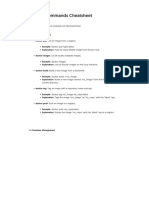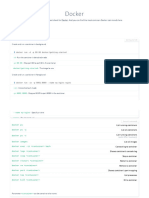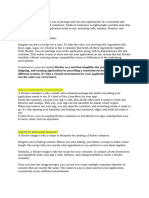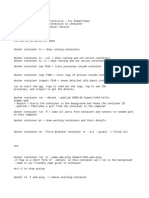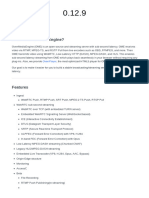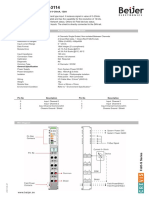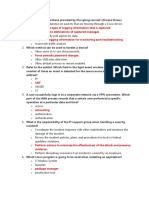0% found this document useful (0 votes)
60 views4 pagesDocker Task
This document provides a comprehensive guide on Docker basics, including installation, running containers, managing images, and using Docker Compose. It covers tasks such as pulling images, creating Dockerfiles, linking containers, and deploying applications using Docker Swarm. Additionally, it touches on advanced topics like creating custom networks and integrating Docker with CI/CD pipelines.
Uploaded by
LAKKICopyright
© © All Rights Reserved
We take content rights seriously. If you suspect this is your content, claim it here.
Available Formats
Download as PDF, TXT or read online on Scribd
0% found this document useful (0 votes)
60 views4 pagesDocker Task
This document provides a comprehensive guide on Docker basics, including installation, running containers, managing images, and using Docker Compose. It covers tasks such as pulling images, creating Dockerfiles, linking containers, and deploying applications using Docker Swarm. Additionally, it touches on advanced topics like creating custom networks and integrating Docker with CI/CD pipelines.
Uploaded by
LAKKICopyright
© © All Rights Reserved
We take content rights seriously. If you suspect this is your content, claim it here.
Available Formats
Download as PDF, TXT or read online on Scribd
/ 4










